"My dad recently turned off the Wi-Fi in my house for more than two weeks. This morning, my phone beeped at me and alerted me that my phone had not been backed up for iCloud for two weeks. I wasn't even AWARE I had iCloud, and I'm not sure what to do. It has never popped up before. If I don't back it up, what will happen? Is iCloud backup necessary?"
- from Apple Community
Nowadays, our phones are not just communication tools; they also store a vast amount of important data such as photos, contacts, text messages, and app data. Therefore, backing up your iPhone is a crucial step not to be overlooked. In this article, we'll answer two questions: "Why do I need to back up my iPhone?" and "What happens if you don't back up your iPhone to iCloud?". Let's take a look.
What is the purpose of iPhone backup? Is it okay not to back up your iPhone? You can find the answer in this part.
The main purposes of backing up an iPhone are as follows:
If you don't back up your iPhone, the following situations may occur:
After understanding the importance of backups, the next step is to choose the right backup method. Different methods suit different needs and situations. This article will introduce several main backup options, including using Coolmuster iOS Assistant, iCloud, and iTunes/Finder, to help you select the most suitable backup solution.
Coolmuster iOS Assistant is a powerful backup tool that helps users easily back up and restore iPhone data. It offers two backup methods: one-click backup of all content and selective backup of chosen data. The one-click backup quickly transfers all data from your iPhone to your computer, while the selective backup allows you to choose specific data to back up, such as photos, contacts, or messages. Both methods can be used flexibly according to your needs, ensuring the security of your important data.
Core features of Coolmuster iOS Assistant:
Follow the steps below to back up your iPhone to the computer using iOS Assistant:
01Download the software to your PC or Mac and connect your iPhone using a USB cable.
02Tap "Trust" on your iPhone to proceed, then follow the on-screen instructions to have your iPhone detected by the software. Once recognized, you will see the main interface as shown below.
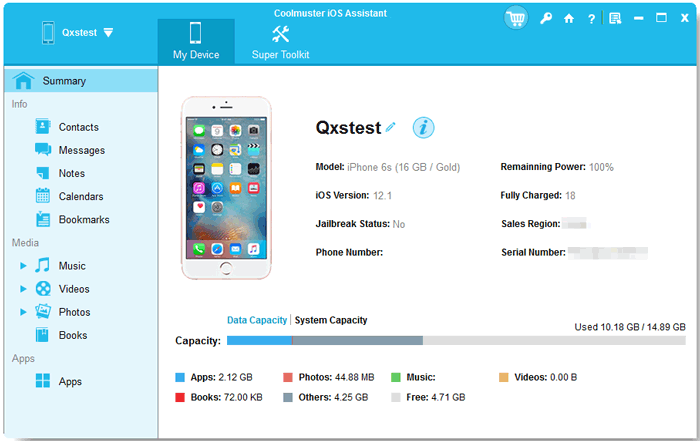
03To back up your entire iPhone, go to the "Super Toolkit" section, select "iTunes Backup & Restore", choose "Backup", and select your iPhone from the drop-down menu. Click "Browse" to choose a location on your computer to save the backup files, then click "OK" to start the backup.
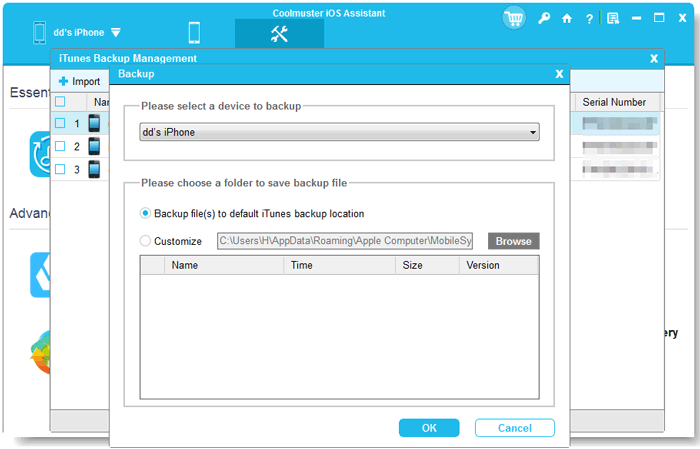
To back up specific files, go to the "My Device" section, choose the file types from the left panel, preview and select the files you want to transfer, and then click "Export".
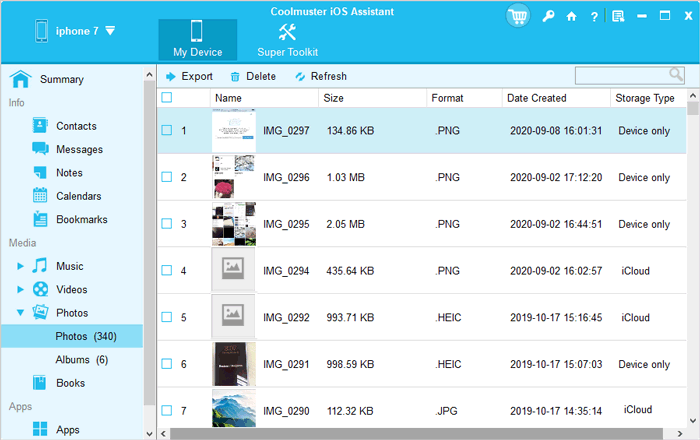
Video Tutorial:
If you don't want to download software, you can use iCloud to back up your iPhone. However, please note that iCloud's free storage space is limited. If you run out of space, you will need to purchase additional storage or delete some unnecessary files to free up iCloud storage.
To back up your iPhone to iCloud, follow the steps below:
Step 1. Make sure your iPhone is connected to a strong Wi-Fi network.
Step 2. Go to "Settings" > [Your Name] > "iCloud" > "iCloud Backup".
Step 3. Make sure the "iCloud Backup" switch is turned on. Your iPhone will automatically back up regularly.
Step 4. Tap "Back Up Now" to start a manual backup.
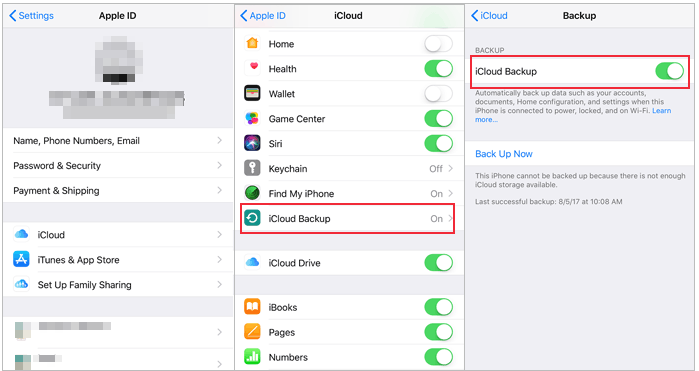
While iCloud backup is very useful, it is not the only backup method. If you prefer not to use iCloud, you can back up your data to your computer using iTunes. For macOS Catalina or later, use Finder for backups; for macOS Mojave or earlier or a Windows system, use iTunes for backups.
To back up your iPhone using iTunes:
Step 1. Open iTunes on your computer and connect your iPhone using a USB cable. (If this is your first time connecting the device, a prompt will appear on your iPhone asking you to trust this computer. Tap "Trust".)
Step 2. In iTunes, click the device icon in the upper left corner.
Step 3. Under the "Summary" tab, locate the "Backups" section. Select "This Computer" as the backup location.
Step 4. Click the "Back Up Now" button to start the backup process. (iTunes Back Up Now greyed out?)
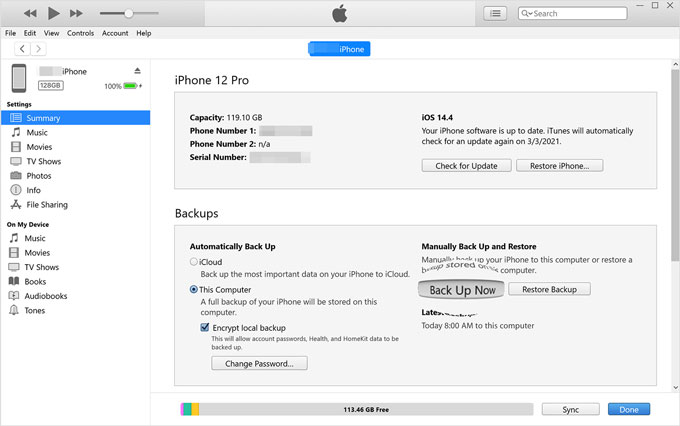
To back up your iPhone using Finder:
Step 1. Open Finder on your Mac and connect your iPhone using a USB cable.
Step 2. In the Finder window's sidebar, you will see your iPhone appear under the "Locations" section. Click on your iPhone to open the device management interface.
Step 3. In the device management interface, click the "General" tab. In the "Backups" section, select "Back up all of the data on your iPhone to this Mac" as the backup location.
Step 4. Click the "Back Up Now" button to start the backup process.
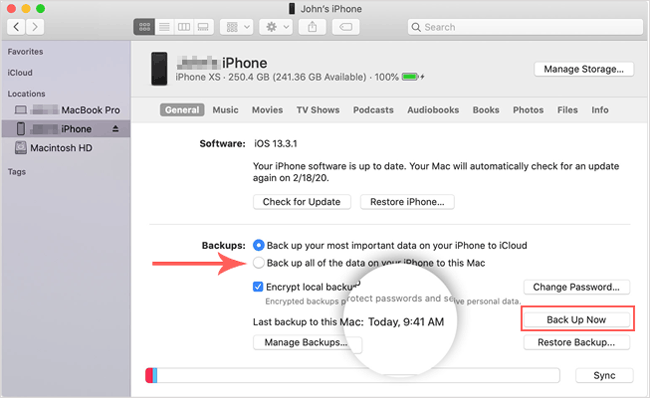
Q1. What happens if you never backed up your iPhone?
If you have never backed up your iPhone, you will be unable to recover your data if the device encounters issues or is lost. This could result in the permanent loss of important information. Therefore, it is advisable to back up your device as soon as possible to avoid potential data loss risks.
Q2. Why did my backup fail?
Backup failures can occur for various reasons, including network issues, insufficient storage space, or device malfunctions. Check if your network connection is stable, ensure there is enough storage space on your device, and verify that iCloud storage is adequate. If the problem persists, try restarting your device or updating the system.
Q3. How long does a backup iPhone take?
The backup time depends on the amount of data and network speed. Generally, iCloud backups can take anywhere from a few minutes to several hours. If there is a large amount of data, the backup time will increase accordingly. Using Coolmuster iOS Assistant can be faster.
Q4. How often should you back up your iPhone?
The frequency of backups should be based on how often your data is updated. If you frequently add new data, it's recommended to back up weekly or monthly. For users with frequent daily updates, increasing the backup frequency can ensure real-time data protection.
Backing up your iPhone is a wise choice. Whether through Coolmuster iOS Assistant, iCloud, or iTunes/Finder, regular backups can ensure the safety of your data. Even if your device seems fine now, it doesn't guarantee that accidents won't happen in the future. Backups are the best way to prevent data loss.
For a more flexible backup solution, Coolmuster iOS Assistant is recommended.
Related Articles:
[SOLVED] iCloud Backup Taking Forever? 7 Easy Ways Can Fix It
iCloud Backup vs. iTunes Backup: What's the Difference between Them?
How to Fix iPhone Backup Not Enough Space on Computer Issue (Proven Tips)
[You Need to Know] How Much iCloud Storage Is Needed for a Backup?





